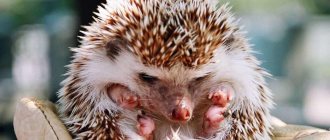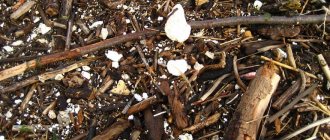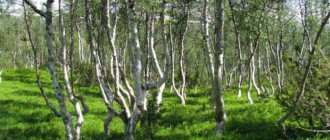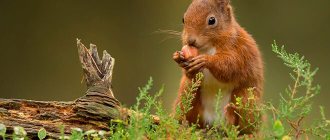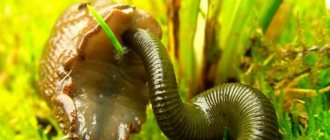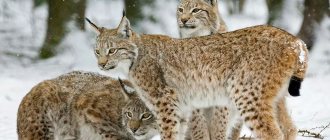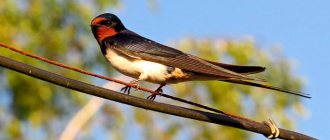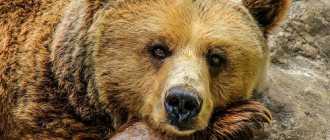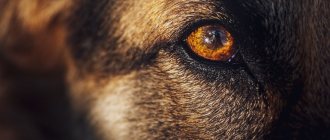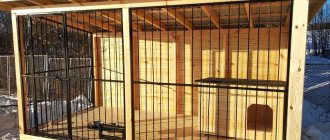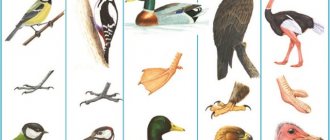4
Average rating: 4
Total ratings received: 115.
4
Average rating: 4
Total ratings received: 115.
The forests are home to many animals. Among them there are herbivores and predators, scavengers and omnivores. Butterflies and beetles, birds and bats fly. Mice and toads rustle in the grass. Inevitably, some animals eat others. The relationships between groups of organisms that arise during feeding are called food chains. The article examines the various food chains characteristic of the forest.
Food chains
Food chains begin with organisms that can independently create organic matter, that is, with plants. There are two types of chains depending on the type of organic matter.
- In the first type, the initial link is represented by a living plant; a herbivore feeds on it, which is eaten by a predator.
- In the second type, the plant dies, insects, worms, and mollusks and fish in reservoirs feed on its remains. The predator completes the chain.
Food chains do not exist separately from each other. An animal from one chain can be included in another chain. This is how a food network in the forest is formed, which ensures the sustainability of the natural ecosystem.
In nature, at the end of food chains there are various scavengers who clear the forest of dead animals. These are worms, insects, birds, animals and others. Some predators can also feed on carrion (wolf).
Homework assignments
Make a model of a power circuit that was not discussed in the textbook. In class, compare it with the models your friends made.
Let’s make models of the food chains given in the answer to the questions in the “Test yourself” section:
- Cabbage - Hare - Wolf.
- Pine nut - Squirrel - Marten.
In the book "Green Pages" read the story about ladybugs. Pay attention to what they eat. How do you feel about ladybugs? What can you do to protect them?
These amazing insects turn out to be not only very beautiful, but also useful. They protect our gardens and vegetable gardens from other insects, because despite their size they are predators. They feed on aphids, small insects that suck juices from plant leaves. Thus, these insects help gardeners preserve their crops.
I really like ladybugs, they are beautiful and harmless to humans. I think that they should not be destroyed, but on the contrary, they should be attracted to gardens and vegetable gardens in various ways. I will definitely never squash a ladybug.
See also:
- Wikipedia on food chains
- Textbook topic: “Animal diversity”
Food chains in mixed forests
Mixed forests contain coniferous and deciduous trees: fir, spruce, pine, elm, birch, aspen, rowan, alder. Rodents (mouse, shrew, hare), ungulates (deer, roe deer, elk, wild boar), and predators (fox, wolf, weasel, eagle owl) are common. The first type of food chain predominates here.
The first link in the chain is berries, fruits, cereals, leaves, tree bark, and young branches of bushes. The second link is herbivorous and omnivorous animals - ungulates, birds, insects. The last link is the predator, and the chain can continue if the predator is small. It can be eaten by a larger animal.
Let's create a food chain typical for mixed forests.
The beginning of the chain is an oak tree with acorns, the next link is a squirrel eating acorns. It, especially squirrels, is hunted by weasels, which become prey for an eagle owl or a fox.
Rice. 1. Weasel.
Pushkin did it!
- Analyze information about various animals. Which nutritional group would you classify them into? Fill the circle with the appropriate color: green – herbivores; blue – insectivores; red – predatory; yellow - omnivores.
The swallow, hedgehog and lizard eat insects, which means they are insectivores.
Owl, fox, lynx feed on other animals, we call them predators.
Crows and wild boars eat everything, both plant and animal foods; they are omnivores.
The wood mouse, hare and elk eat exclusively plant foods; they are herbivores.
2. On your own or with the help of the atlas-identifier “From Earth to Sky,” give examples of herbivorous and predatory animals. Write at least three names in each paragraph.
Herbivores (they are also called herbivores): elephant, hare, zebra, deer, elk, bison, hamster, kangaroo, horse, rabbit, elk, goat, sheep, antelope, deer, buffalo, giraffe, camel, donkey.
Predatory animals (they are also called carnivores): wolf, cheetah, lion, leopard, fox, tiger, lynx, eagle, hawk, puma, panther, hyena, jackal, bear, domestic cat (yes, any domestic cat is it is a predator), badger, marten, mink, wolverine
3. Complete the appliqué model. Cut out the pictures from the Appendix and arrange them correctly. Ask the student sitting next to you to check on you. After checking, paste the pictures.
Tell us about these power circuits using the model.
- The mouse eats nuts, and the marten eats mice.
- Slugs eat cabbage and are themselves food for frogs.
- The mouse eats wheat grains, mice are eaten by snakes, and snakes are food for the kite
4. Draw up power circuit diagrams.
a) Write in the correct order: wolf, oak, boar.
The boar eats acorns (oak fruits), and the wolf hunts wolves.
Oak->boar->wolf
b) Write in the correct order: pine, woodpecker, bark beetle. Draw the arrows.
A bark beetle eats pine bark, and a woodpecker eats beetles
Pine->bark beetle->woodpecker
c) Give your example of a power supply circuit.
mosquito-frog-heron
grass-cow-man
spruce (seeds) - squirrel - owl (or marten, hawk)
5. The methods of protection in plants and animals are very diverse. This is what Seryozha and Nadya’s dad drew. Complete his tasks.
Some plants defend themselves with sharp thorns (1); burning hairs (2); bitter taste (3). Find these plants in the picture and label them with the corresponding numbers.
How do animals protect themselves? Look at the pictures and try to explain on your own who is defending themselves how.
Bees have a sharp sting with a poisonous secretion.
The turtle hides under a strong shell.
The snail also hides in a hard shell.
The lark has a protective coloration and hides on the ground among tall grass (for example, ears of wheat).
The butterfly also has a protective coloring; it is not noticeable on the bark of trees. And in case of danger, it opens its wings, on which large “eyes” are painted, which scare away predators. This is a peacock butterfly.
Back to Contents
Hello! My name is Maria, I am the author of the Pushkin website. I hope that my site helps you, in turn I ask for your help. My son was diagnosed with autism. He needs daily correctional activities, if you can help, I will be grateful to you. Every 10 rubles you give is another chance for my child to live a full life. Collection page here
Coniferous forest food chains
A coniferous forest or taiga is characterized by a variety of coniferous trees with a small admixture of deciduous trees in the undergrowth. Animals of the taiga - chipmunk, squirrel, hare, elk, forest reindeer, sable, lynx, wolverine, bear and others. Both types of food chains are observed here.
- The chain of the first type begins with pine nuts, the second link is the Siberian chipmunk. He is attacked by a predatory sable, but he himself often ends up as lunch for the wolverine.
Rice. 2. Siberian chipmunk.
- At the beginning of the chain of the second type is a dead tree. The longhorned beetle lays eggs in wood, where larvae hatch and process dead organic matter. In spring and summer, the great spotted woodpecker finds and preys on the larvae. The taiga hunter goshawk will not refuse to feast on a woodpecker.
The longhorned beetle feeds on flower pollen and is therefore a good pollinator. Beetles are hunted by insectivorous birds.
Rice. 3. Longhorned beetle.
You can briefly describe the food chains in the forest and give examples of animals that make up the chains in a lesson on the environment in 3rd grade in the form of a report.
Roles of organisms in a community
Squirrel is a herbivore. She collects all kinds of mushrooms and pins them on tree branches to dry. To protect itself from winter lack of food, it stores reserves in the hollow: nuts and acorns.
In the fall, the badger begins to prepare for winter hibernation - it eats itself, stuffing everything it comes across inside. The badger is an omnivore; it eats wild berries and fruits, beetles and slugs. Lizards, frogs and mice also serve as food for him.
The fox is a predator, lives in the forest and eats what it catches. She hunts mice and sometimes partridges. Runs after hares. In winter, it comes close to human settlements and attacks poultry.
The 3 animal food chains described are the simplest.
Biology and medicine
Biogeocenosis: food chains (trophic)
In a reservoir, unicellular planktonic algae are eaten by cladocerans (animal filter feeders). They, in turn, are consumed by predatory mosquito larvae. These larvae feed on fish (roach), which become prey for pike.
This sequence of organisms feeding on each other is called a food, or trophic, chain. The organisms that make up this chain belong to different trophic levels. The first trophic level is producers; the second is consumers.
or consumers, first order (herbivores, and in our example - cladocerans); third - second-order consumers (primary predators); they feed on secondary predators - third-order consumers, etc.
On land, food chains usually consist of 3-5 links, for example: plants - sheep - humans; plants - insects - lizards - birds of prey; plants - grasshoppers - frogs - snakes - eagle.
The given examples of food chains are called grazing. since living organic matter serves as food in them. Food chains of consumers of dead organic matter are called detrital. They start with plant and animal remains, animal excrement and go to small animals and microorganisms that feed on them.
Who eats what: food chains
All animals, one way or another, are connected to each other in the food chain: some eat plants, and some eat other animals.
Since plants are the main food of herbivores, they occupy first place in the food chain.
Only plants are able to synthesize nutrients from water and carbon dioxide under the influence of the sun. Thus, they are an excellent source of food for many species of animals.
Rice. 3. Plants are a valuable source of food.
The second place is given to herbivorous animals.
The third place is occupied by predatory representatives of the animal world.
Example of a food chain: grain - mouse - fox.
At first glance, it may seem that life on Earth would be much more pleasant if there were no insects, snakes, or frogs. But they are all important links in the food chain. Without them on the planet, such a fragile ecological balance would be disrupted: sick animals would spread infections, infecting other animals and people, plants would not be pollinated and crops would be lost. Absolutely all animals on Earth are of great value!
For whom are the answers to the lesson about the world around us, grade 3, part 1?
Many parents are indignant about these workbooks, because they do not add knowledge, and they take up a lot of time, because tasks, as a rule, force you to search and systematize information from life, books and the Internet, and often this falls on the shoulders of parents, not children. The reasons are simple: the child has not yet been taught to search and systematize, and at his age he is not ready to do it in the quality manner that is sometimes required at school. There are many examples from life when parents wanted to instill independence in their child and a third-grader himself prepared presentations and reports, but the teacher gave unsatisfactory grades for them at school. So parents have to work on their child’s lessons. Studying turns into a competition “which parent is smarter and more patient.” So the answers to the notebook are just for you, parents. We understand how hard it is to educate a child when teachers put everything on your shoulders. We'll try to help. In any case, GDZ will help you with your homework.
